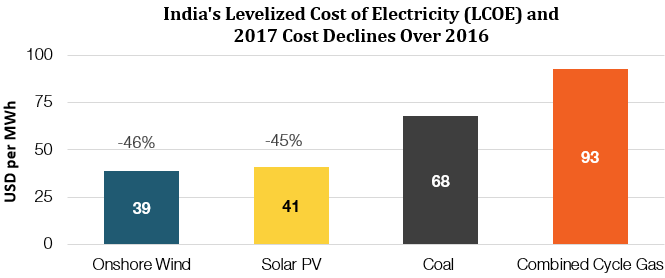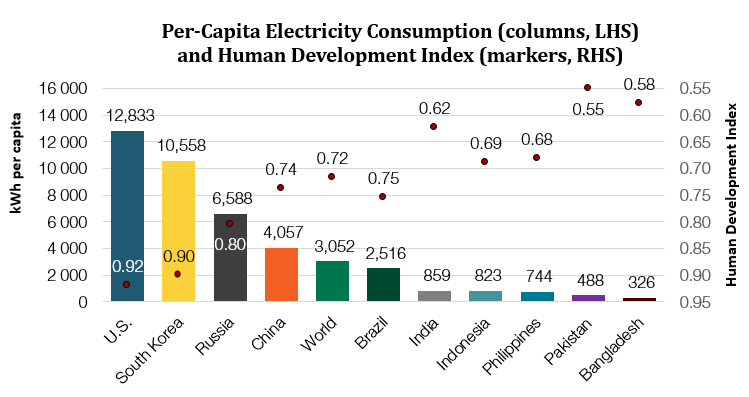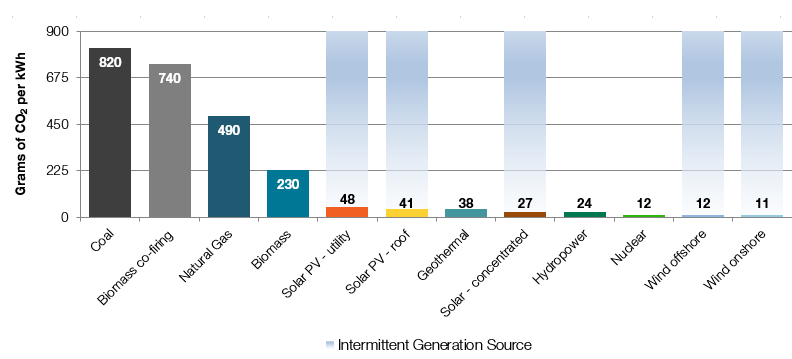By Isuru Seneviratne of Radiant Value Management
The full-cycle cost of generating electricity from renewable sources in India dropped dramatically and is now cheaper than the fossil-fueled competition. This is a step-change with massive implications for global energy markets and the climate outlook. When coupled with energy storage, future electric grids may be a lot greener than today.

Exhibit 1: Levelized Cost of Electricity considers full-cycle costs of electricity generation. Source: Bloomberg New Energy Finance
Access to modern forms of energy, especially electricity, is critical to driving economic growth and fulfilling human development. A World Bank study of more than 60 low-income countries found that in urban areas, electrification is the only key factor that reduced both the infant mortality rate and the under-5 mortality rate.

Exhibit 2: Sources: International Energy Agency, BP Statistical Review, United Nations
Fossil fuels – the predominant energy source in the Anthropocene – has adverse local and global climate implications. The rapid cost decline of renewable electricity generation, with low life-cycle emissions, is changing the equation. While the initial renewable deployment depended on subsidies, the economic drivers (Exhibit 1) will unleash an avalanche of new capacity over the coming decades. This means low-consuming countries (Exhibit 2) can aggressively deploy low-carbon energy (Exhibit 3).
Carbon Intensity of Electricity Sources and their Intermittency

Exhibit 3: Source: Intergovernmental Panel on Climate Change
2014 Assessment, Annex III Table A.III.2
Fossil fuels play three major roles in the energy mix: bulk generation, dispatchable generation and provision of flexibility. While the decline in renewable costs address the first aspect, inherently intermittent wind and solar destabilize electric grids. However, coupling renewable generation with energy storage can solve all these challenges at once. Lithium-ion battery costs have been declining at 19%/a since 2010. Storage costs are to further halve by mid-2020s. While early into this seismic shift, our steady progress gives hope for Earth’s climate.
